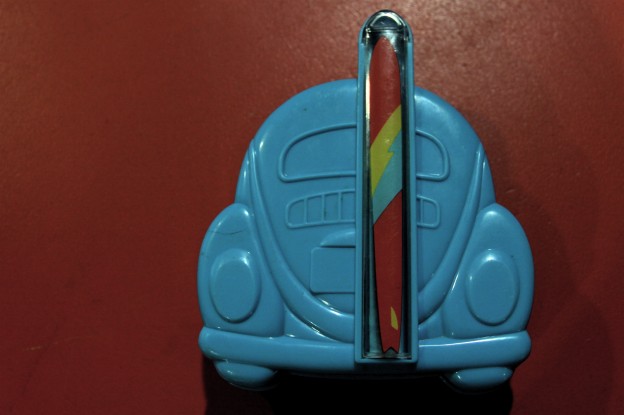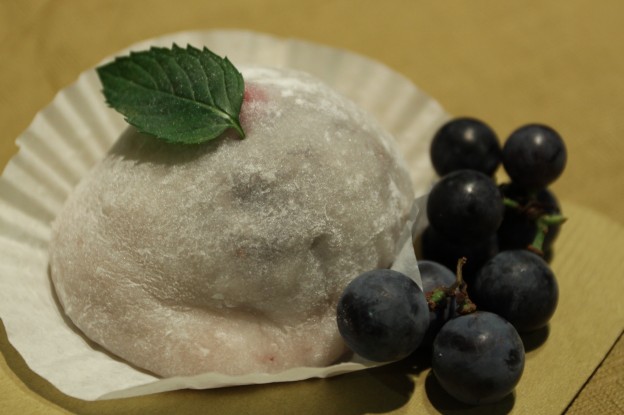
Debra Samuels signs copies of her cookbook (photo: Elizabeth Hathaway)
Take a minute to think about your lunch today. Was it well balanced, nutritious and seasonal? Was it portioned correctly, so that you ate it all without inadvertently overeating? Was it beautifully constructed, with bright colors and funky designs? And, most importantly, did your lunch produce no food, plastic or paper waste?
Before attending the recent book launch for Debra Samuels’ latest cookbook, My Japanese Table: A Lifetime of Cooking with Friends and Family, sponsored by the Japan Society of Boston, I would have assumed that a lunch following so many guidelines would be too time-consuming to make, too expensive to buy day after day, and too unattainably ideal to be both beautiful and delicious. But after Samuels’ palate-engaging introduction to the Japanese Bento box this past Wednesday at the Children’s Museum, Boston, I will never look at a brown paper bag lunch the same way again.

My Bento Box (photo: Elizabeth Hathaway)
To begin the evening, Samuels voiced a common myth circulating among American kitchens: “For many people, Japanese food is unapproachable, with small, beautiful, expensive portions.” But as I learned throughout the evening, Japanese Obento features principles of eating that Americans are valuing more and more and promoting to others.
“Japanese Obento is about small portions, a lot of variety, seasonality, balance, presentation and quality,” she explained. What’s more, according to Samuels, the Bento box, and all of the healthy and yummy goodness it contains, is extremely accessible to American families.
Samuels, a cookbook author, travel writer, cooking teacher and regular contributor to the Boston Globe, discovered Obento while living in Japan with her husband and two young sons. When one of her sons came home from class upset because his lunch wasn’t as “cute” as the other children’s, Samuels decided to teach herself about the Obento tradition.

How it all began: The Samuels' first Bento box (photo: Elizabeth Hathaway)
She soon learned that “cute” was only one small aspect of Obento.
“It is a very thoughtful process,” said Samuels, with her warm motherly smile and palpable enthusiasm. “In America we tend to tell kids we love them; Japanese culture shows them.” And what is more thoughtful than being conscious of including five different colors and textures into a Bento box, insuring a balanced nutrition? Or utilizing color and design to appeal to children who are apt to throw away their PB&J’s and celery sticks untouched? “If you have five colors on your plate, you have a balanced meal,” Samuels told us. “It also is associated with the five parts of the body and the five elements.”
While the original Obento tradition can be quite elaborate and require hours of labor and creativity, Samuels worked with her sons to make Bento boxes that were healthy, appealing, easy and affordable. Now, after nearly a decade of practice, Samuel is a reliable expert. She encourages preparing simple components, such as meatloaf, in advance, and utilizing leftovers. She also recommends enlisting your children to help prepare and assemble the Bento boxes as a fun learning activity.
Obento, however, isn’t just for kids. The Bento box has caught on among trendy nutritionists and green activists: the practice of using Bento boxes and Obento values are a great way to combat an American penchant for supersized portions, foods of poor nutritional value and lots of wasteful packaging. For those trying to lose weight, the Bento box makes food fun and enjoyable, not a hyper-conscious calorie counting affair.
So, back to your lunch today. Does it need an Obento makeover?

Mochi Dumpling with Strawberry and Red Bean Paste (photo: Elizabeth Hathaway)
For more information about Debra Samuels, her new cookbook, My Japanese Table, and her other exploits in and around the kitchen both at home and abroad, visit Cooking At Debra’s.
For upcoming Japan Society of Boston events, such as the Samuels book launch, visit their website.
To catch up with Debra Samuels in person and ask her your own questions about Obento, head out tomorrow, Sept. 20th, to the Lexington Farmers Market, Lexington, MA, 2-6:30 pm.

Pingback: Niwa Public Relations » wbur: Obento For Beginners: An Evening with Debra Samuels